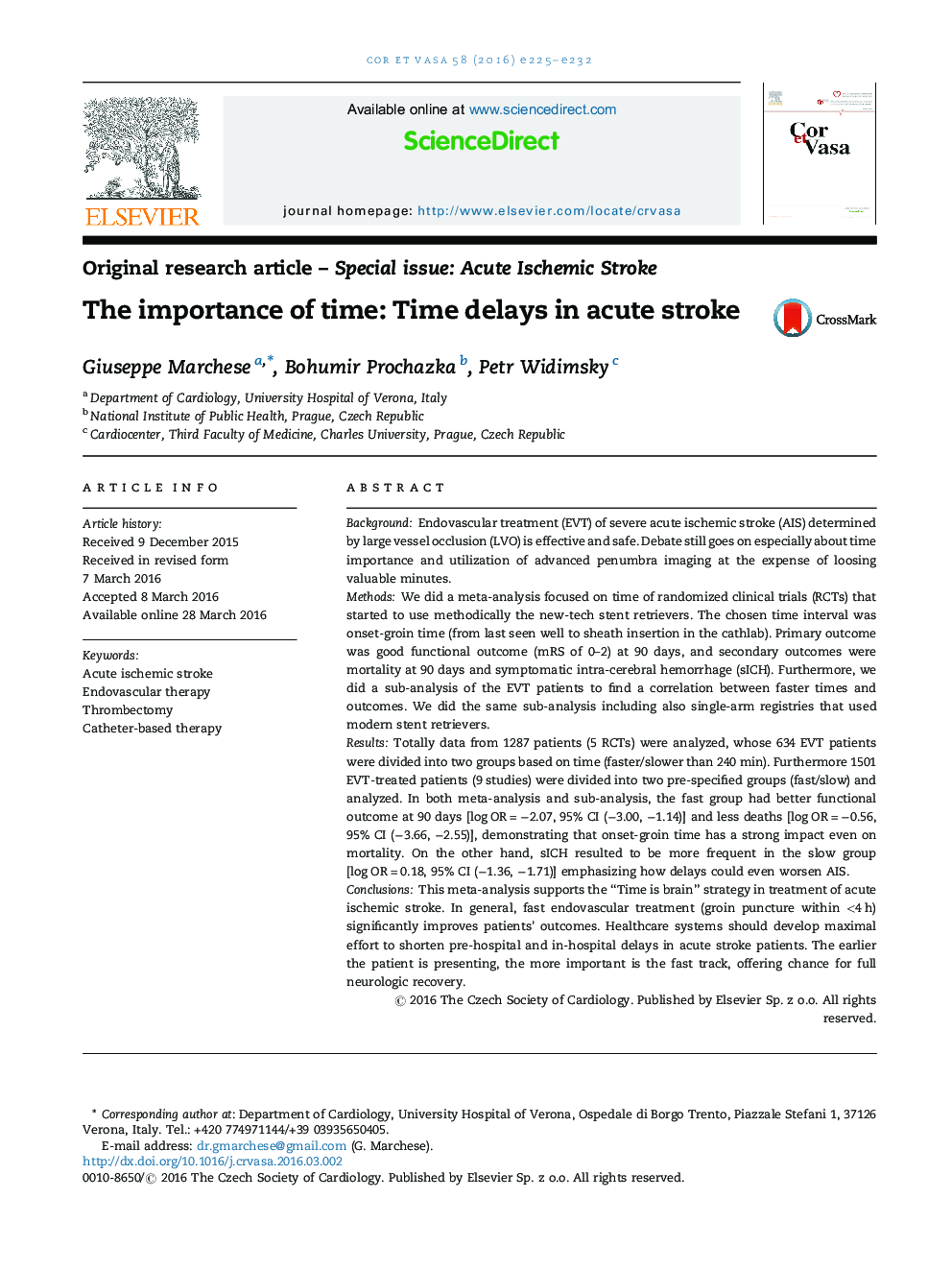| Article ID | Journal | Published Year | Pages | File Type |
|---|---|---|---|---|
| 2728312 | Cor et Vasa | 2016 | 8 Pages |
BackgroundEndovascular treatment (EVT) of severe acute ischemic stroke (AIS) determined by large vessel occlusion (LVO) is effective and safe. Debate still goes on especially about time importance and utilization of advanced penumbra imaging at the expense of loosing valuable minutes.MethodsWe did a meta-analysis focused on time of randomized clinical trials (RCTs) that started to use methodically the new-tech stent retrievers. The chosen time interval was onset-groin time (from last seen well to sheath insertion in the cathlab). Primary outcome was good functional outcome (mRS of 0–2) at 90 days, and secondary outcomes were mortality at 90 days and symptomatic intra-cerebral hemorrhage (sICH). Furthermore, we did a sub-analysis of the EVT patients to find a correlation between faster times and outcomes. We did the same sub-analysis including also single-arm registries that used modern stent retrievers.ResultsTotally data from 1287 patients (5 RCTs) were analyzed, whose 634 EVT patients were divided into two groups based on time (faster/slower than 240 min). Furthermore 1501 EVT-treated patients (9 studies) were divided into two pre-specified groups (fast/slow) and analyzed. In both meta-analysis and sub-analysis, the fast group had better functional outcome at 90 days [log OR = −2.07, 95% CI (−3.00, −1.14)] and less deaths [log OR = −0.56, 95% CI (−3.66, −2.55)], demonstrating that onset-groin time has a strong impact even on mortality. On the other hand, sICH resulted to be more frequent in the slow group [log OR = 0.18, 95% CI (−1.36, −1.71)] emphasizing how delays could even worsen AIS.ConclusionsThis meta-analysis supports the “Time is brain” strategy in treatment of acute ischemic stroke. In general, fast endovascular treatment (groin puncture within <4 h) significantly improves patients’ outcomes. Healthcare systems should develop maximal effort to shorten pre-hospital and in-hospital delays in acute stroke patients. The earlier the patient is presenting, the more important is the fast track, offering chance for full neurologic recovery.
